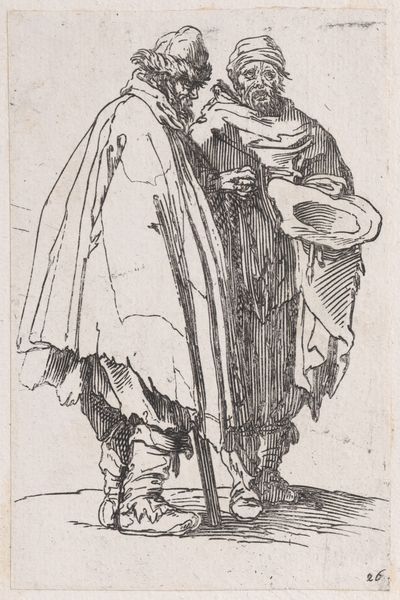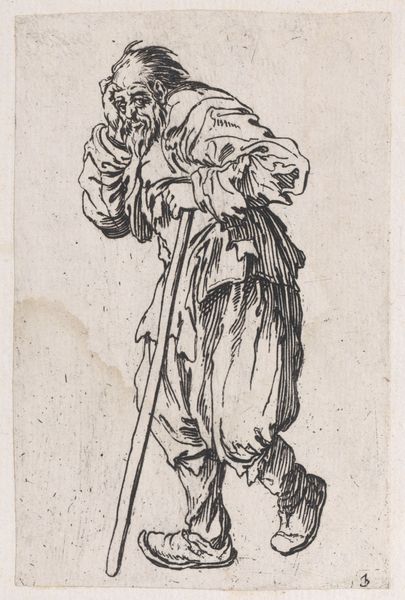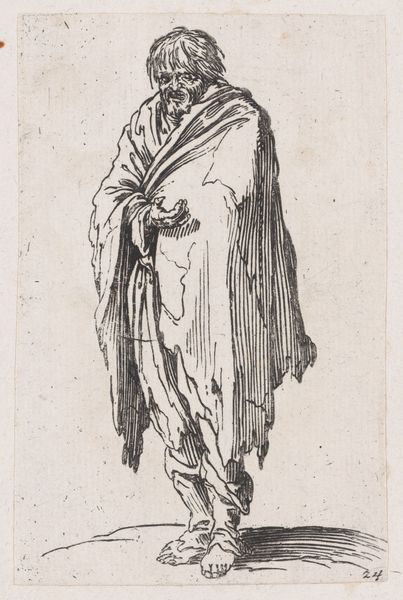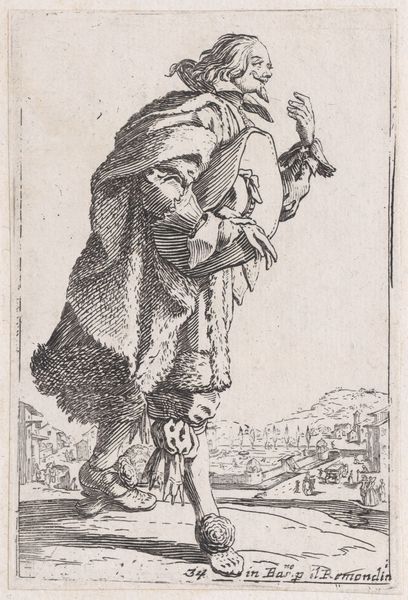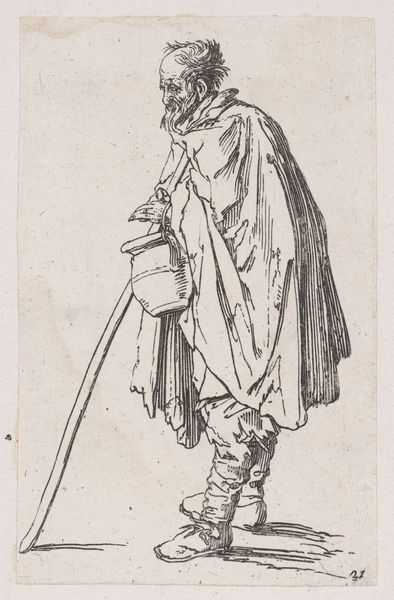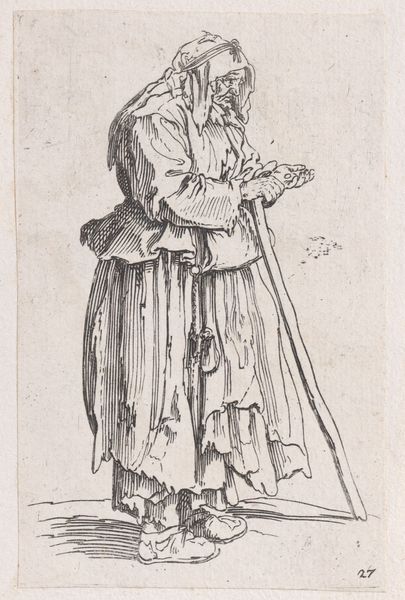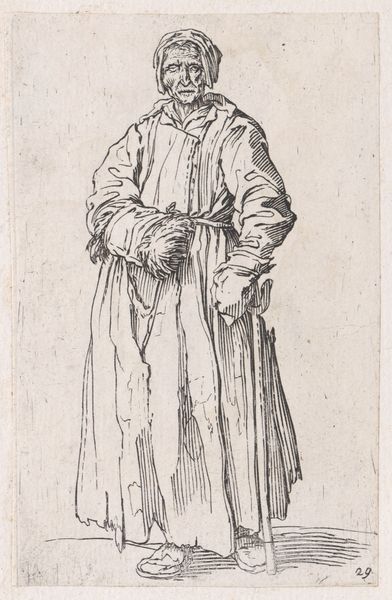
Reverse Copy of Le Gentilhomme au Manteau Bordé de Fourrures Tentant ses Mains Derrière le Dos (The Gentleman with a Fur Lined Coat Holding his Hands Behind his Back), from La Noblesse (The Nobility) 1625 - 1700
0:00
0:00
drawing, print, etching, engraving
#
portrait
#
drawing
#
narrative-art
#
baroque
# print
#
etching
#
figuration
#
genre-painting
#
engraving
Dimensions: Sheet: 5 11/16 x 3 3/4 in. (14.4 x 9.5 cm) trimmed and backed
Copyright: Public Domain
Editor: This etching, titled "Reverse Copy of Le Gentilhomme au Manteau Bordé de Fourrures Tentant ses Mains Derrière le Dos" is estimated to have been created sometime between 1625 and 1700 by an anonymous artist, and it depicts a noble gentleman with a furry dog. I'm intrigued by the cross-hatching technique; how does it contribute to the piece's overall impact, particularly considering the likely production processes of the time? Curator: The process is central here. The lines weren't spontaneously drawn, right? This wasn't a sketch. This image resulted from very deliberate labor: the layering of engraved or etched lines upon a metal plate, repeated proofing, inking, wiping, and pressing. A nobleman’s status— his dress, his dog, his pose – is captured using a replicable, mass-producible method. Where do you see evidence of class distinctions embedded in the very act of production and distribution? Editor: Well, the figure is a nobleman, so the print certainly captures a particular class, and by definition reproduces its likeness to a wide audience. Was this meant for popular consumption, and if so, how might its value have been perceived across different social strata? Curator: Exactly. The circulation of this print complicates our understanding of "nobility". It transforms aristocratic identity into a commodity, an image available for consumption. Consider the economic implications of replicating images of the elite, both for the engraver and the portrayed. How does that erode or reinforce class structures? Is art in service to capital? Or subverting it? Editor: That's a fascinating point. I hadn't considered how the very act of reproducing the image of nobility could influence perceptions of class and status through its own materiality. Curator: It is also worth investigating the paper quality and ink. That would reveal the print's economic accessibility and further challenge or support existing notions of value. The means by which this was crafted informs how it was viewed. Editor: Looking at it this way makes me rethink how art could be not just a representation, but also a reflection and even a shaper of its contemporary social structure. I never considered the impact of the means of reproduction to such an extent! Curator: Indeed! It serves as a potent reminder to investigate labor and capital in art production.
Comments
No comments
Be the first to comment and join the conversation on the ultimate creative platform.

